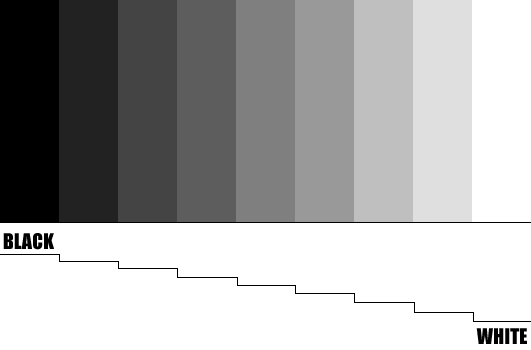This third article about line and edge enhancement builds on the articles Shimmering and the Chevreul Effect, both of which should be reviewed for background information. This article demonstrates a simple method for enhancing focal brilliance.
Beginning again with the Chevreul Effect.

In the last article you learned that the lateral inhibition model explains the enhancement of edge and line, and the brightness gradient that occurs in each stripe above.
There is more going on, however. The image below is of two identical but inverted Chevreul diagrams placed on a background luminance gradient.

It may surprise you that the two images are objectively identical but simply inverted. However if you block out all background you will see that this is the case. This is done below:


This example shows us that the Chevreul Effect undergoes dramatic changes when it is placed on a background luminance gradient. Note in particular the much wider brightness range in the top diagram, as well as the flattening of the Chevreul Effect in each band.
Simple lateral inhibition, explored in the last post, does not predict the dramatic differences between the two diagrams. The lateral inhibition model does not predict this dramatic difference between these two bands. It is apparent that broader context has a powerful effect on local lateral processing.
The mechanisms of this effect are well beyond this article. However, we can recognize that it occurs and use it in our artwork. Brilliance can be created by placing a focal bright object on a background luminance gradient. Here is an example of this. The painting below uses a luminance gradient from the top left to the bottom right to create brilliance in the window of the house.

Berchtesgaden in Bavaria
Karl Triebel
Frye Art Museum, Seattle WA
You might also like these posts:
Please contact me at christopherkuntzart@gmail.com with comments.